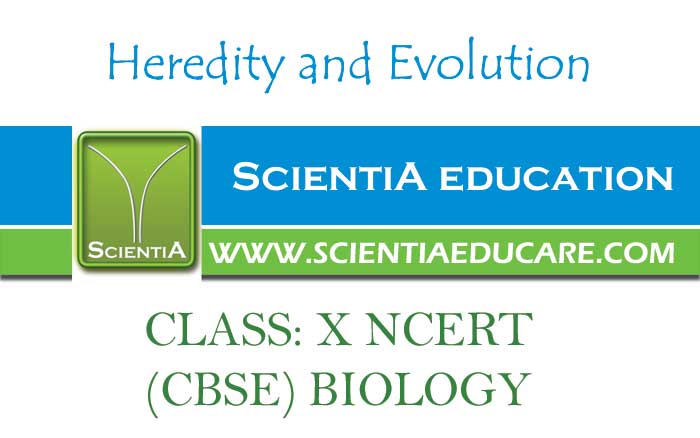
Summary
An important result of the reproductive cycle is production of similar featured individuals for generations. The transmission of characteristics through successive generations refers to heredity. These characteristics
include all physical, physiological and psychological
characteristics in organisms. We refer to them as traits.
The study of the mechanism of transmission of
characteristics from parents to the next
generations is called genetics.
• Heredity may be defined as the transmission of characteristics through generations
• Variation may be defined as differences among individuals of a species
• Both heredity and variation play important roles in evolution of organisms
• The study of the mechanism of transmission of characteristics from parents to the next generations is called genetics
• Gregor Mendel was the first to carry out scientific studies on transmission of characteristics from the parent to the offspring
• Mendel postulated that there are certain physical entities called the factors that are responsible for the transmission of characters; these factors are now called genes.
• The laws of genetics explain the dominance of certain traits and recessive nature of other, the haploid nature of gametes and their independent assortment
• Inheritance, according to the chromosomal theory, is due to the passage of genes that are present on the chromosomes of the parents to the offspring
• The genetic material is made up of chromatin or the chromosomes that consists of two strands called the chromatids held together by the centromere (decides the shape of the chromosome)
• Chromosomes contain the genes that are arranged in a linear fashion. Each gene is a short chain of nucleotides arranged in a specific sequence
• Each organism contains a fixed number of chromosomes in each of its cells. The chromosomes are of two types – autosomes and sex chromosomes. In humans males have X and Y sex chromosomes whereas females have X and X sex chromosomes.
• Variations are of many types. Based on whether they are phenotypic or genotypic, they are called somatogenic and blastogenic respectively
• If the variation among a group of organisms is large and very obvious, it is called discontinuous and if it is small, it is called continuous
• Variations play an important role in evolution, especially those that are inheritable i.e., the genotype ones
• Sex is determined by various factors and in humans on the type of chromosomal fusion
• Microevolution is evolution on a small scale within a species or single population. It can be due to mutation, migration, genetic drift and natural selection
• Speciation is the evolutionary process by which new biological species arise. The original group will not or cannot reproduce with the new species. A new gene pool is formed
• Speciation takes place when variation occurs over time with geographical isolation (allopatric speciation); mostly geographic isolation (peripatric speciation): partly grographic isolation (paripatric speciation); non geographic (sympatric)
• Evolution may be defined as a gradual development of more complex species from pre-existing simpler forms
• According to Lamarck, parts that are continuously used develop well and those that are not used get degenerated. These acquired characters are then inherited. This theory is not very widely accepted
• Weismann proposed the theory of continuity of germplasm, only the changes that affect the germ cells and the germplasm (the collection of genes) will be inherited by successive generations
• Darwin proposed the theory of natural selection to explain the ‘survival of the fittest’ to lead to the next generation
• A study of evidences taken from various fields such as paleontology, comparative anatomy, geological distribution, embryology, etc. in search of the exact mechanism of evolution constitutes neo-Darwinism
• A comparison on the common features in the various classes of organisms shows that an evolutionary process exists and there is a link between the different groups
• A phylogenetic tree reconstructs the evolutionary relationships between organisms. It shows at what stage evolutionary paths of species diverge or branch as lineages evolve and split and modifications are inherited
• Reliable indicators of common ancestry can be distinguished on the basis of homologous characters by comparing anatomical features, studing biochemistry and morphology based similarities and differences of species
• Fossils also show evidences of evolutionary relationships. Their study provide knowledge about the extinct forms, and also provide links between two groups of species
• Organisms have emerged due to evolution by stages and adaptations for new functions. Intermediate stages can be traced by studing their family tree or by examining variation in gene pools and DNA.
• Evolution has given rise to more complex forms with the simpler forms still existing and flourishing.
• Human beings evolved in Africa some 250,000 years ago and spread across the world in stages.
• Inspite of the diversity of in human types, human being are highly genetically homogenous and belong to a single species of Homo sapiens.













